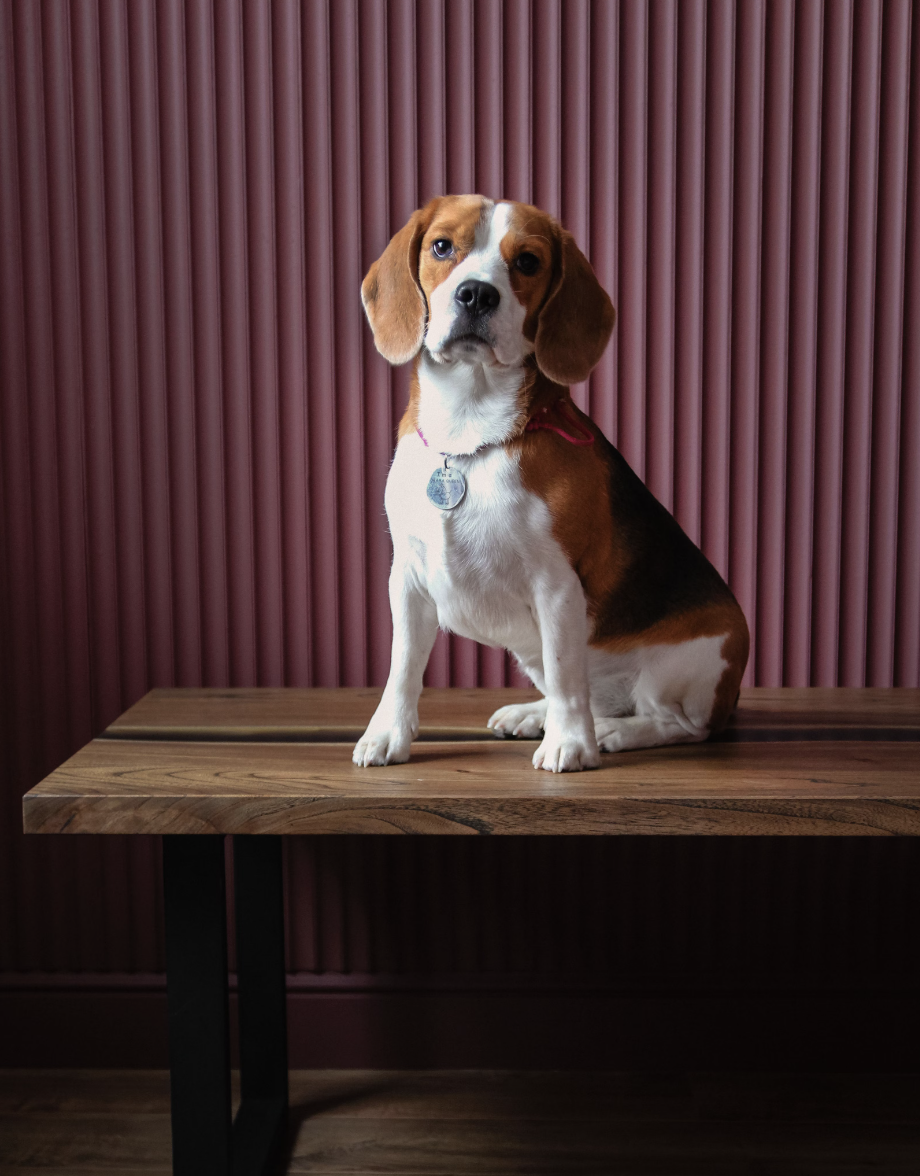Did you know that if all the kangaroos that live in Australia invaded Uruguay, each Uruguayan would have to fight against approximately 13 kangaroos?
Interesting? Sort of.
Entirely useless in practical terms? Absolutely.
And to be honest, this likely describes this post – an interesting but useless piece 0f trivia. So let’s circle back to our post title: When is a Beagle not a Beagle? The answer? When its AKC breed standard includes other breeds. And here we have a confession to make. We’ve finessed the answer to a trick question (put another way, we’re making a square peg fit into a round hole).
A Beagle that meet its breed standard is, of course, still a Beagle, but we found it interesting that the standard mentions two other breeds to either describe what the ideal is, and what it isn’t. In the section on Forelegs and Feet, the standard points out that “forelegs crooked or Dachshundlike” are a defect. It also read under General Appearance that the Beagle is “a miniature Foxhound.“
The Beagle is not the only breed to have a standard that refers to other breeds when describing itself. The AKC breed standard for the Scottish Deerhound mentions the Greyhound six times!
Ears: Should be set on high; in repose, folded back like a Greyhound’s, though raised above the head in excitement without losing the fold, and even in some cases semi-erect;
The neck should be long-of a length befitting the Greyhound character of the dog;
Deerhounds do not stoop to their work like the Greyhounds;
Body: General formation is that of a Greyhound of larger size and bone;
A Deerhound should resemble a rough-coated Greyhound of larger size and bone;
Ears-Small (dark) with Greyhound-like carriage.
The Harrier also makes mention of another breed: “The Harrier should, in fact, be a smaller version of the English Foxhound.”
But wait, there’s more!
From the Irish Wolfhound’s AKC standard: “The largest and tallest of the galloping hounds, in general type he is a rough-coated, Greyhound-like breed;”
And the Miniature Schnauzer’s standard: “The Miniature Schnauzer is a robust, active dog of terrier type, resembling his larger cousin, the Standard Schnauzer;”
From the Preamble of the Shetland Sheepdog standard: The Shetland Sheepdog, like the Collie, traces to the Border Collie of Scotland, which, transported to the Shetland Islands and crossed with small, intelligent, longhaired breeds, was reduced to miniature proportions. Subsequently crosses were made from time to time with Collies. This breed now bears the same relationship in size and general appearance to the Rough Collie as the Shetland Pony does to some of the larger breeds of horses.
Interestingly, some breeds have standards that make no mention of other breeds, but their Illustrated Standards do (as if to “flesh out” more of the standard)! From the Great Dane Illustrated Guide:
“The dog we know today as the Great Dane traces its history to the “mastiff” type canines depicted in carvings, pictures and writings dating back to 3,000 B.C.”
It is sheer speculation on our part when we suggest that mention of other breeds in a standard assumed that the reader was familiar with the other breeds mentioned, and “Dachshundlike forelegs” in the Beagle standard is essentially “shorthand” for what might have been a more wordy description. We use another example to fortify this theory, and we had help with this one: “Kerri” shared that in 1950, the AKC Irish Wolfhound standard was revised to remove under General Appearance: “The Irish Wolfhound should not be quite so heavy or massive as the Great Dane but more so than the Deerhound, which in general type he should otherwise resemble.” Kerri adds that all Wolfhound breeders today still adhere to the removed section of the standard.
“Angela” also helped us out by sharing that this was removed from the Old English Sheepdog Breed Standard after standards were reformatted: “Fairly long, strong, square and truncated. The stop should be well defined to avoid a deerhound face. ( The attention of judges is particularly called to the above properties, as a long narrow head is a deformity.)” She adds that breeders who are mentoring still stress never wanting to see a “poorly” or “deerhound” head on an OES. Again, “shorthand” for the opposite of what is ideal in an OES head: Capacious and rather squarely formed.
Other standards (and we’re thinking of the Norwich Terrier’s United Kennel Club standard) mention other breeds as part of the genetic history: “It is speculated that the Norwich Terrier was developed using the small Irish Terriers and crossing them with other Terrier breeds, including the Border and Cairn. The breed originally had two varieties, one with drop ears and one with prick ears, which were interbred and shown together. The two varieties were eventually designated as separate breeds, the original, prick-eared variety being the Norwich Terrier, and the drop-eared variety being the Norfolk.”
We conclude with the nerdy admission that we find breed standards endlessly interesting, but some trivia won’t save your life, or at least, not like this tidbit: If you ever wake up in the middle of the night to the smell of gas, do NOT turn on the light as a spark from a light switch could cause an explosion.
Boom.
Photo of a Beagle by Anna Kumpan/Unsplash

